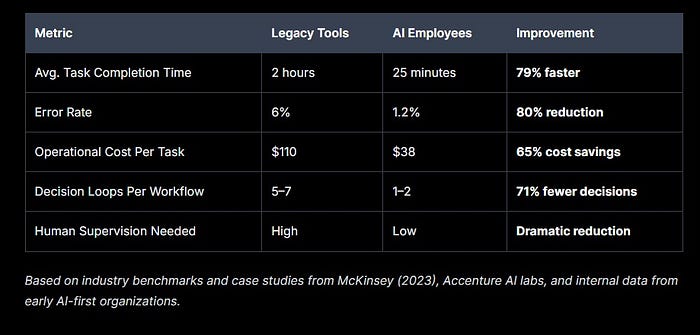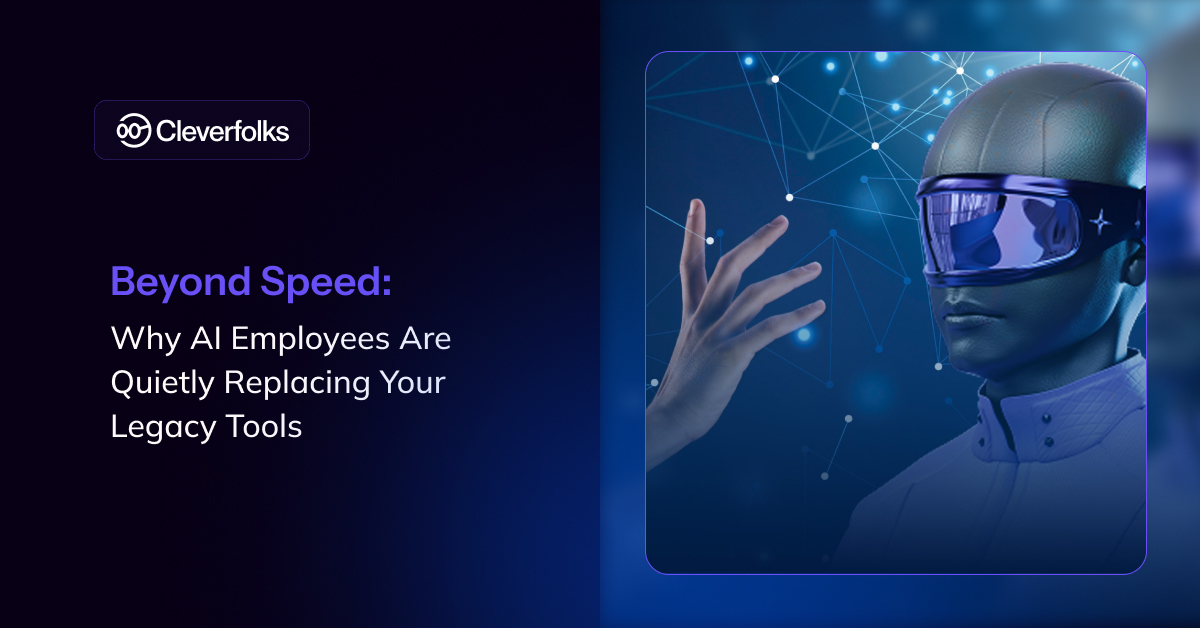Between dashboards, SaaS stacks, and API-powered everything, we’ve optimized for speed. We tell ourselves we’re automating when we’re really just making things feel faster. But speed alone won’t cut it anymore.
The conversation has shifted. Smart businesses are moving beyond acceleration to transformation, building AI employees that think, decide,
and act without human intervention at every step.
The Real Problem: Death by a Thousand Micro-Decisions
Most companies have fallen into the same trap. They’ve built impressive tech stacks, layered on “AI-powered” features, and still watch their teams drown in manual coordination.
Your operations manager juggles seventeen different applications. Your sales team copies data between systems. Your finance person spends more time reconciling tools than analyzing numbers. The promise of efficiency gets lost in the orchestration.
Modern SaaS tools aren’t slow because they’re poorly built. They’re slow because they demand constant human direction. Every automation workflow becomes a decision tree that funnels back to you.
We’ve optimized the individual components while ignoring the cognitive load they create as a system.
Beyond Tools: Autonomous Intelligence That Actually Works
AI employees operate differently. They receive objectives, not instructions. They understand context, not just commands.
When a lead comes in, an AI employee doesn’t just log it, it researches the company, scores the opportunity against your historical data, determines the best outreach approach, and initiates contact. All while you’re focused on closing deals.
When cash flow projections shift, an AI employee doesn’t just flag the change, it models scenarios, adjusts payment schedules, and communicates with vendors. All while maintaining your relationships and approval thresholds.
These systems run on reasoning, not rules. They adapt to edge cases, learn from outcomes, and improve their decision-making over time. They eliminate the constant context-switching that kills productivity.
What the Data Says: How AI Employees Change the Equation
The numbers tell the story clearly:

Based on industry benchmarks and case studies from McKinsey (2023), Accenture AI labs, and internal data from early AI-first organizations.
COVID-19 Made Us Remote. It Also Exposed Tool Fragility.
When the pandemic hit, every organization became a remote organization overnight. The illusion of control through dashboards and check-ins collapsed. Integrations broke. Work slowed not from bandwidth, but from the inability of tools to adapt in real time.
The companies that came out stronger? They weren’t just digital, they were decisive. They built workflows that didn’t rely on approvals and endless syncs.
They laid the foundation for AI employees before they had the name.
Where Most Automation Still Fails Today
Zapier. Make. Notion-to-Slack workflows. Custom ChatGPT hacks. Most businesses have dabbled with them. But here’s the problem: these setups still rely on human awareness. They’re convenient, not intelligent.
The reality is these aren’t autonomous agents. They’re rule followers. When variables shift, the flow breaks. If judgment is required, the system stalls.
In contrast, true automation emerges when agents don’t just receive instructions, they form intent. Furthermore, they analyze the landscape and adapt in motion.
The difference? You don’t manage them. You describe your goal.
Why Your SaaS Feels Smarter Than It Actually Is
A lot of modern tools have the “AI” label, but very few exhibit autonomy.
Most are:
- UI-first (attractive dashboards with no context)
- Feature-heavy (but still rely on user direction)
- Passive in feedback (you click, they respond)
That’s not intelligence. That’s just improved UX.
However, AI employees reverse that equation. You set the destination. They coordinate the journey.
A Glimpse Into What Cleverfolks Is Building
If traditional tools are your sidekicks, then Cleverfolks builds workforce allies.
Our AI employees:
- Think in outcomes, not checklists
- Learn continuously across your operations
- Operate autonomously, but within your boundaries
Importantly, they don’t replace your team. They amplify them. Specifically, they do the grunt work so humans can steer the ship.
Additionally, they are built with modular logic, designed to evolve, and operate as true automation, not faux-AI fluff.
If you’ve ever felt your SaaS stack makes you look productive but leaves you drowning in micro-decisions, then it’s time for something that actually works for you.
Join the Waitlist
The shift from task-based tooling to intelligent execution isn’t theory. Rather, it’s a transition already in motion.
Cleverfolks AI Employees are designed for this next chapter, where systems aren’t just connected, they’re coordinated.
